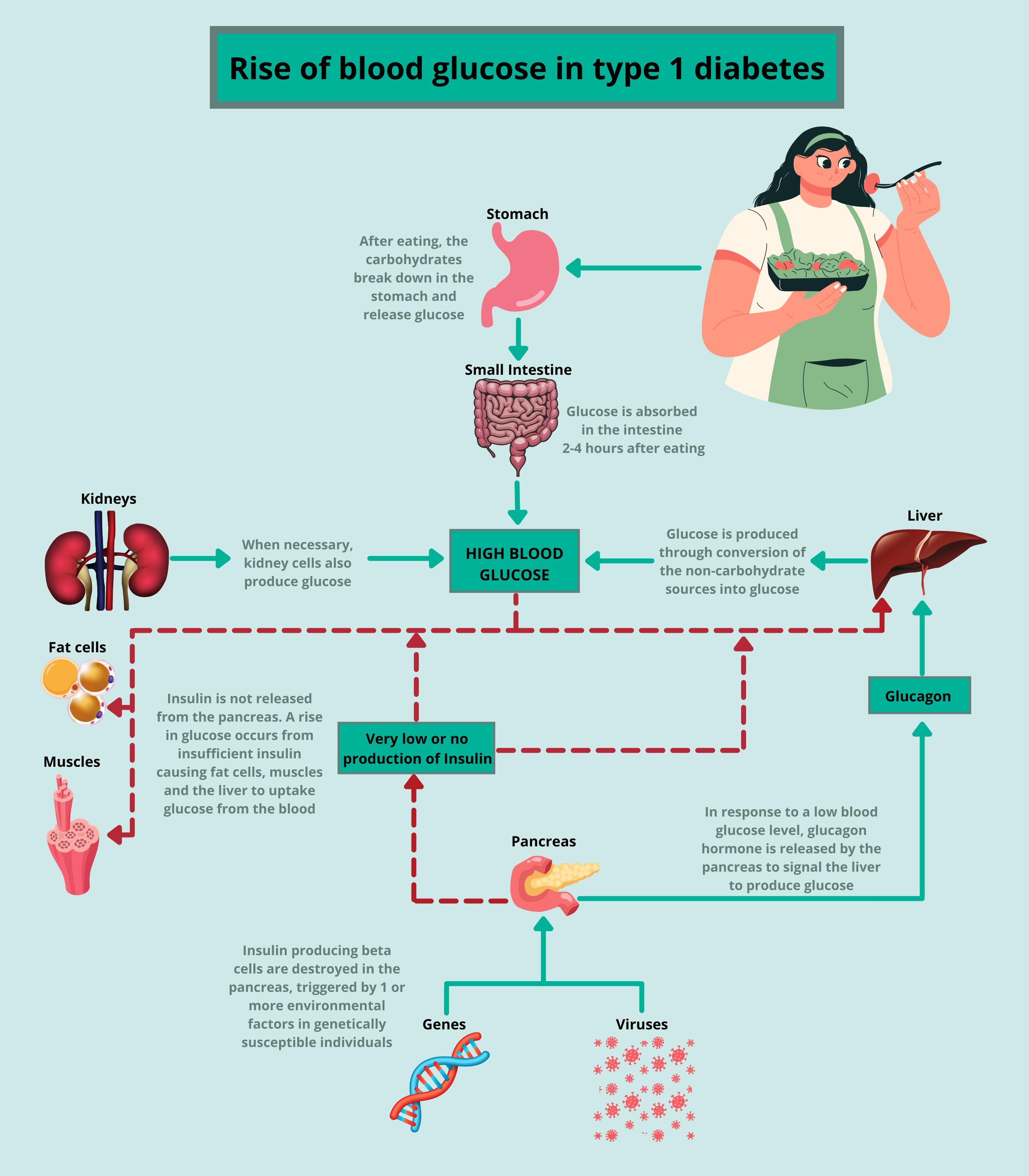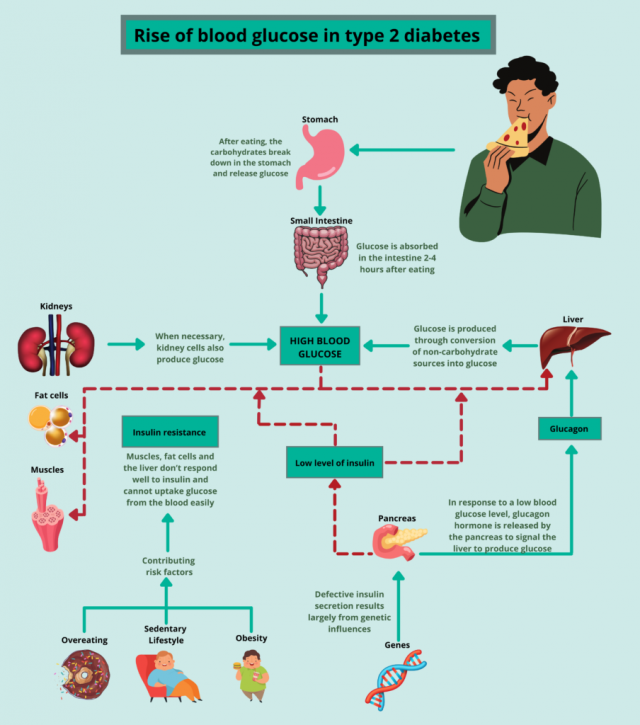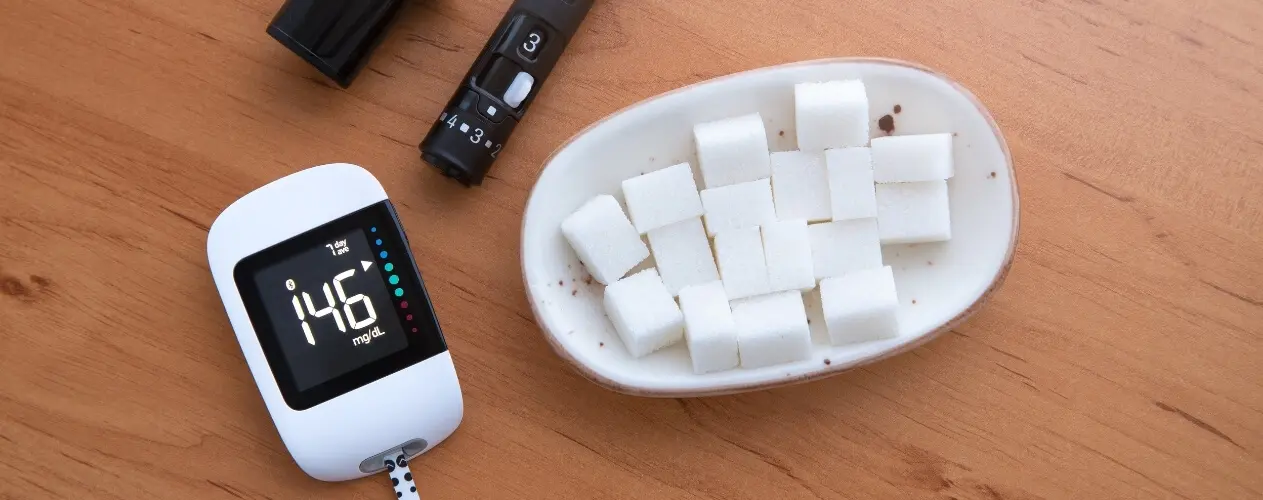Learn all about the causes, risk factors, and developments related to Type 1 and Type 2 Diabetes.
Diabetes affects around 422 million people worldwide. This has increased steadily over the past decade. Diabetes most commonly affects people living in low-income and middle-income countries. Both type 1 and type 2 diabetes are associated with increased blood sugar levels and the risk of complications from having high blood sugar.
Understanding how the disease occurs will empower you to better manage your condition. Also, knowing the pathology of the condition will help you understand the ways medications and healthy lifestyle habits work to lower the blood glucose level and reduce eventual complications.
Blood glucoseregulation and synthesis in the body

Glucose is sugar and the main source of energy found in the blood. It is the most simple form of carbohydrate.
Glucose in the blood is derived from three sources:
- Intestinal absorption of ingested food is converted to glucose in the stomach. Absorption usually occurs 2-4 hours after a meal.
- Liver cells produce glucose by converting non-carbohydrate sources, such as proteins and fats. The liver also breaks down glycogen (a stored form of glucose), resulting in production of glucose. Glycogen is made up of many connected glucose molecules.
- When necessary, kidney cells can (though not always) synthesize glucose
The blood glucose level is controlled by many hormones, in particular, insulin and glucagon. These hormones are synthesized in the pancreas. Both help regulate the levels of blood glucose in the body.
Insulin helps the glucose in the blood enter cells in the muscle, fat, and liver. Insulin is released in response to the rise in blood glucose levels. It helps keep the blood glucose level within the normal range.
Glucagon, a hormone that is also produced by the pancreas, is synthesized when the glucose level is low. Glucagon stimulates the liver cells to synthesize more glucose, in order to bring the low sugar level back to normal.
Rise of blood glucose in type 1 diabetes

Type 1 Diabetes Mellitus is an autoimmune condition. This means the body’s immune system is triggered by environmental factors that cause the destruction of beta cells in the pancreas that produce insulin. Type 1 diabetes is most commonly present during childhood in genetically susceptible individuals.
Because of the destruction of insulin-producing cells and a lack of insulin, the mechanisms required to control blood sugar levels are affected. Glucose does not enter the cells in the muscle, fat, and liver, causing a rise in blood sugar levels.
This is why insulin becomes the main mode of therapy for people with type 1 diabetes.
Rise of blood glucose in type 2 diabetes

The development of type 2 diabetes is quite different from type 1 diabetes. There is no autoimmunity, however, there is a combination of defective secretion of insulin plus insulin resistance. Insulin resistance occurs when cells in the muscle, fat, and liver do not take up the glucose because they are resistant to insulin’s effect. Contributing causes of insulin resistance are obesity, sedentary lifestyle, and overeating. Also, genetics and aging are less prominent contributions to insulin resistance. Defective insulin secretion is largely due to genetic influences.
Certain medications can also contribute to insulin resistance, and put you at higher risk of developing type 2 diabetes. These are some first- and second-generation antipsychotics, fluoroquinolone class of antibiotics, HIV medications, beta-blockers, statins, and thiazide diuretics. If you are taking any of the medications associated with insulin resistance as a side effect, do not stop without first consulting with your doctor. Medications are generally prescribed after assessing benefits and risk factors. Work with your doctor who may be monitoring you regularly.
In a nutshell
Type 1 diabetes is an autoimmune condition which occurs due to the destruction of insulin-producing cells in the pancreas. Type 2 diabetes occurs due to the combination of insulin resistance and defective insulin secretion.
Despite the causes of diabetes, maintaining a healthy lifestyle and keeping your blood sugar level within the normal range is possible, even if challenging. Making healthy food choices, maintaining a healthy weight, adhering to medications, and keeping all your doctor appointments can help you ensure the best quality of life and prevent complications.


